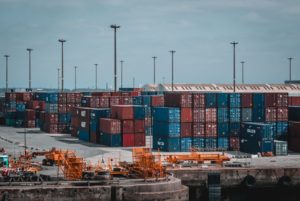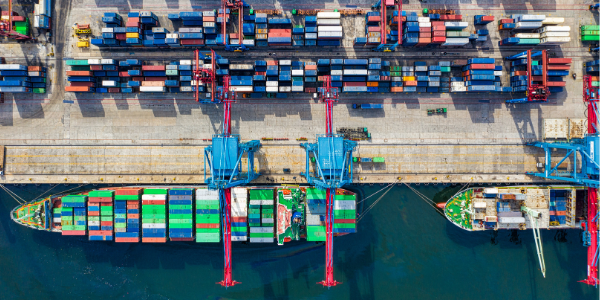Located along a number of the world’s busiest sea lanes, Indonesia offers tremendous potential for sea transportation. While the 2013 slowdown in investment and consumption also affected maritime cargo, the world is absolute to improve once the economy brightens up again, buoyed by strong freight demand within the ASEAN region. within the future, Indonesia’s growing manufacturing industries and increased production and processing of natural resources will secure rising export demand, while imports should still like vibrant consumer spending. Construction of latest port facilities will eventually alleviate congestion at major terminals, which has been one amongst the best constraints on growth within the industry.
Aside from national and regional economic process, improving infrastructure should facilitate growth in Indonesia’s shipping and shipbuilding sectors. When foreign flagged carriers were barred in the domestic shipping for more engagement, the presence of vessels allowed the local companies to participate or capitalize the immense requirement of transporting goods and humans through the globe’s largest archipelago. With each passing day, costly logistics are skyrocketing up the consumer prices, harms the Indonesia’s industrial vying. It puts pressure for liberalizing port management and domestic shipping.
Indonesia’s Shipping and Shipyard Industries Sector overview
Ports:
There are over 100 commercial ports in Indonesia but they hold the capabilities for small vessels on the domestic runs, and few more container facilities. For storing huge ports to receive trans-oceanic vessels, has gone through the shortage period as the system was inefficient. In the building of the ASEAN single market, Jakarta is shaping for upgrading to open up the country’s largest ports for handling international traffic. As you know Jakarta’s Tanjung Priok port is overloaded for handling about more than two-third of the Indonesia’s export and import facilities.
It’s still unable to accommodate very large container ships, though its long-term expansion is about to enable it to handle vessels with a capacity of up to 18,000 TEU (twenty-foot equivalent units). Its current throughput capacity of 5 million TEU a year pales as compared with a number of the world’s largest ports that happen to be within the neighborhood, like Singapore’s with over 31 million TEU.
Vessels:
Increasing demand, particularly for domestic shipping, has sparked an unlimited increase within the Indonesian commercial fleet: from 6,041 vessels in March 2005 to 12,536 in July 2013, consistent with the Indonesian National Ship Owners Association (INSA). The increase in the number of ships tripled the total volume capacity, from 5.67 million GT (Gross Tonnage) in 2005 to 17.89 million GT in 2013. National shipping lines finds profit in the cabotage principle as enacted in Law No. 17/2008 on Shipping, that reserves the domestic shipping for the Indonesia flagged carrier, including the Indonesia crew. Although the Government Regulation 22/2011 gives permission for exemptions from the cabotage principle. As in regards of the transportation services, especially for the gas industry and offshore oil. Why? Because the country still relies heavily on the global companies. Activities foreign firms can provide, as long as no Indonesian company is offered, are oil and gas surveying, offshore construction and support for offshore operations, moreover as dredging and salvage and underwater work. this is often quite a distinct segment market, and because the government seeks to spice up offshore exploration and production, this business area should see substantial growth over the approaching years
Shipyards:

Indonesia’s installed capacity for ship construction and repair doesn’t befit the country’s geographic character as an archipelago amid the busiest waterways within the fast-growing Southeast Asian region. Practically, shipyard holds the capacity to grow hand in hand with help from the shipping business. But that’s not what happened in the case of Indonesia. More than 200 shipyards inside the country with combined annual fresh building has the capacity of building around 800,000 DWT (dead weight tones) and the maintenance proportions of more than 10 million DWT. While those figures represent significant increases over the past years, they fail to accommodate the wants of the growing national fleet, not least because many local yards are incapable of putting out large ships. The Batam-Bintan-Karimun trade Zone (FTZ) is developing into a shipbuilding center, capitalizing on its proximity to the financial hub of Singapore, where most of the investment comes from. While the success of the project has been the subject of debate, the FTZ does grant industries operating within its borders significant benefits in terms of taxation and duties.
The 2008 Shipping Law
If you are involved in shipping, you would definitely have heard about the 2008 Shipping Law. You don’t? Hear me out! It simply states to easy the business licensing and port management for boost of the competition and bring more private investment. At the present end, the law also does away with the monopoly in port services enjoyed by state-owned port operator Pelindo (or more precisely, Pelindo I, II, III and IV, each of which operate in numerous regions). Yet competitiveness of the industry continues to be left wanting, with importing and exporting companies lamenting congestion and poor services at Indonesian ports. the planet Bank’s global survey on competitiveness actually shows Indonesia dropping two ranks in terms of cross-border cargo trade and lagging behind other ASEAN nations.
Improving infrastructure
Aside from national and regional economic process, improving infrastructure should facilitate growth in Indonesia’s shipping and shipbuilding sectors. The Indonesia government has seer dedication for boosting maritime transportation, under-developed easter regions for more port facilities, with the help of public and private investment. The Makassar New Port project is geared toward turning South Sulawesi’s capital into the country’s eastern gateway. Chief developer Pelindo IV is considering cooperating with private or other state-controlled companies on the project, which is somewhat belatedly. Construction work is predicted to commence in 2014.
Other projects for brand spanking new or expanded ports are underway round the country, notably in Jakarta, where impeded port access and congestion often delay charging or discharging of cargo and in some cases mean ships leave Tanjung Priok port before they’re fully loaded so as to stay to their published schedules. Kalibaru port, Jakarta is an extension of Tanjung Priok. It is predicted for contributing 4.5 million TEU as in annual capacity.
One of the largest single problem standing on the way of Indonesia’s shipping business is the infrastructure bottlenecks as their removal unlocks the new growth potential in the maritime transportation. Although the port development presents itself for appealing the investment opportunities. Nowadays, most of the Indonesia’s shipping undergoes to Singapore and Malaysia. Seeing the Indonesia’s perfect location, it would eventually become a transshipment hub itself.
Challenges of Shipyard Industry
There is no shipyard with danger. Many insurance companies levy premium charges upon the Indonesia shipping operations keeping an eye for many problems, such as labour disputes and piracy. A report by the International Maritime Bureau (IMB) ranks Indonesia in concert of the worst affected countries for piracy, in stark contrast to the world trend of piracy easing off. Indonesia recorded the most important number of incidents in 2012, though most of those were “low level attacks aimed toward thefts against the vessels and will not be compared to the more serious, violent attacks within the Gulf of Guinea and off Somalia.”
Labour disputes can seriously disrupt work on ports and shipyards. the commercial Centre of Batam, which also harbors lots of foreign-owned shipbuilding operations, has experienced tenacious strikes and a few violent protests in recent years, despite wages there already exceeding typical national levels. There are indications that a number of the protests since 2011 were politically instigated, giving rise to hope that industrial relations may improve after the future general elections.
The Final Takeaway
Given Indonesia’s natural need for maritime transportation and projected strong manufacturing growth in addition as increased trade within the ASEAN region, Indonesia’s shipping sector will be expected to recover quite swiftly from the weak macroeconomic environment of 2013. the best way for foreign players to have interaction within the sector is thru collaboration with local companies, be it in shipping, shipbuilding, port development or port management. Experienced global companies offer funding and knowhow to assist local firms upscale and modernize their operations in preparation for intensifying competition within the ASEAN region.




Leave a Reply